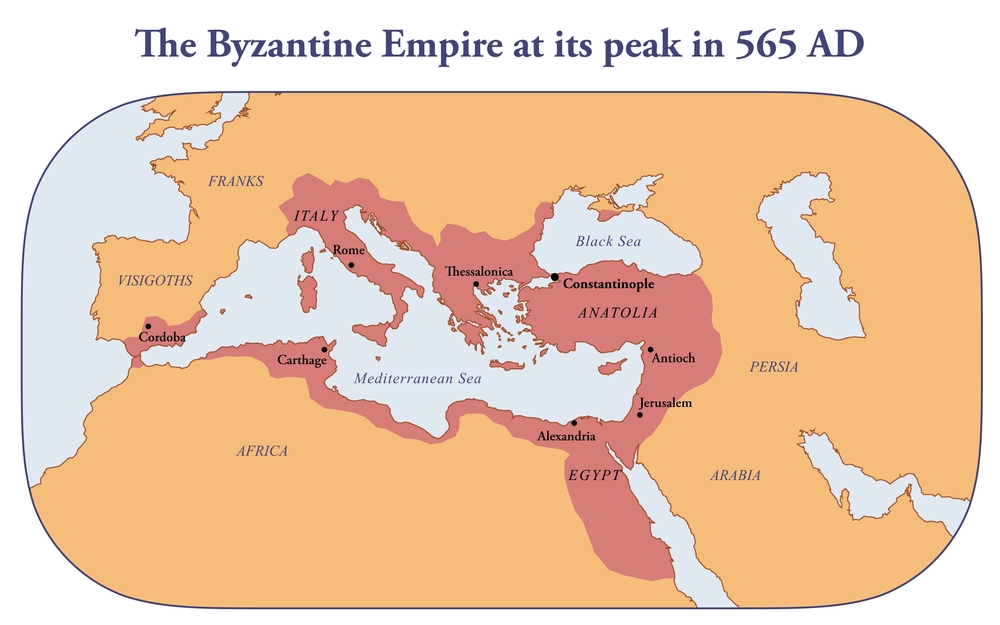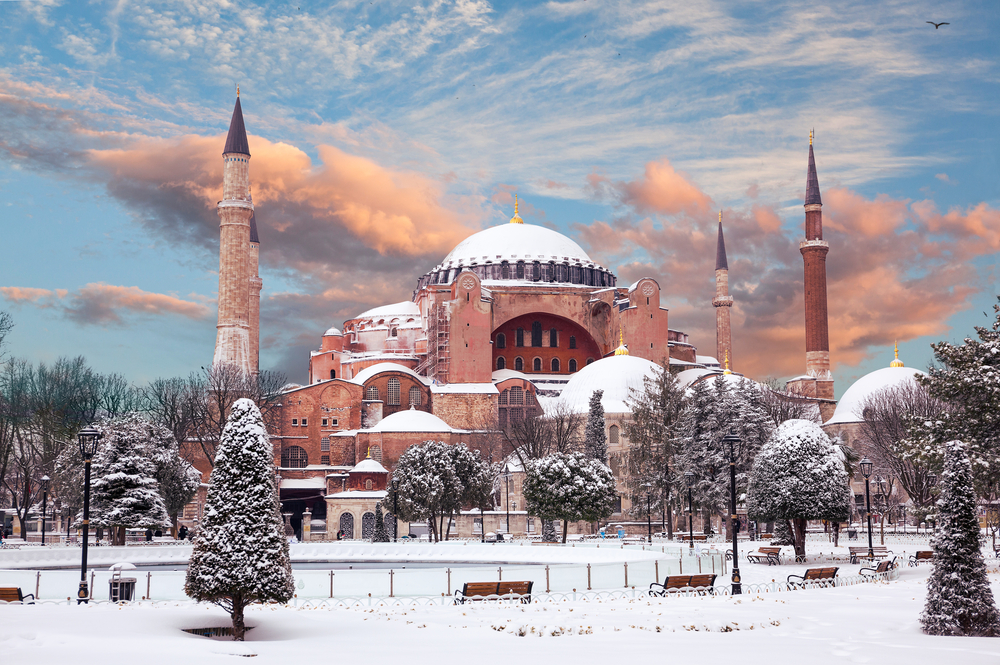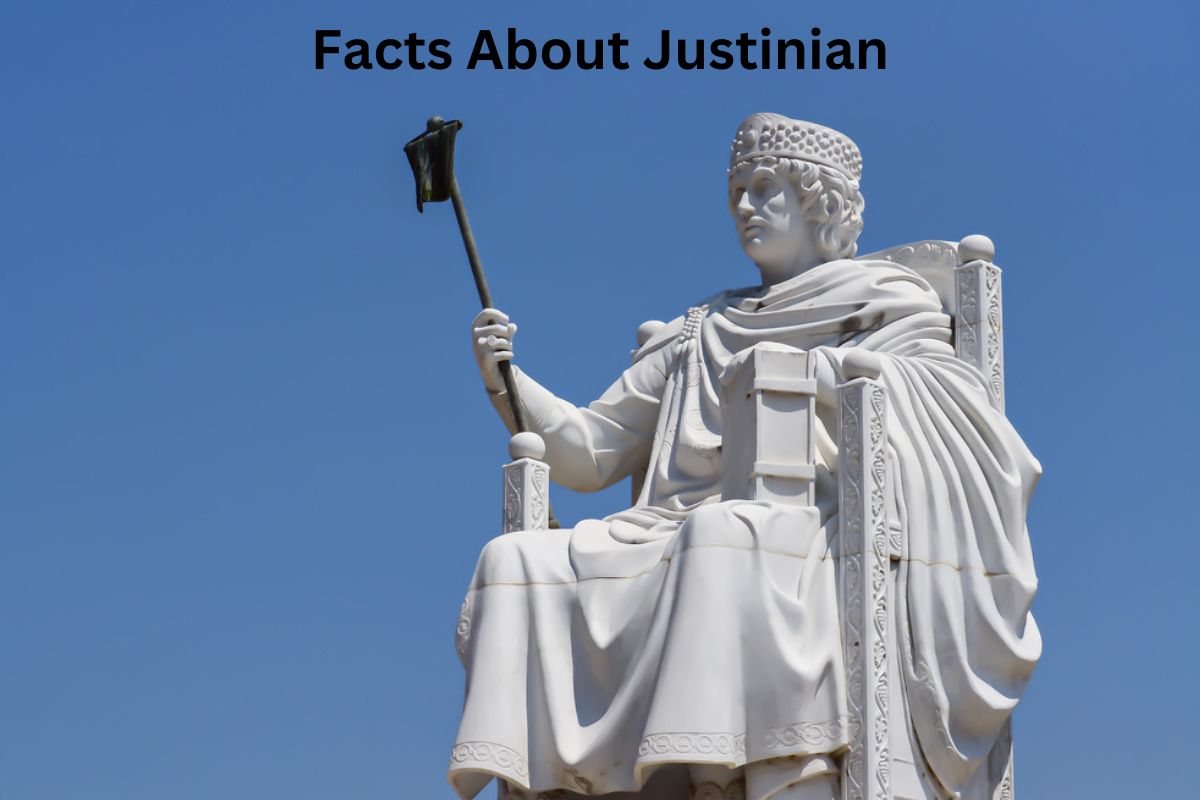Justinian I, also known as Justinian the Great, was a Byzantine emperor who ruled from 527 to 565 AD. Born in 482 AD in Tauresium (now North Macedonia), Justinian embarked on an ambitious reign characterized by significant achievements and challenges.
His most notable contribution was the codification of Roman laws into the Justinian Code, which had a profound influence on legal systems. Justinian also left a lasting architectural legacy with the construction of the iconic Hagia Sophia.
He launched military campaigns to reclaim lost territories, faced the Nika riots in Constantinople, supported scholars and artists, and sought religious unity.
Justinian’s reign had a lasting impact on Byzantine history and law, shaping the empire’s culture, politics, and territorial reach.
Justinian I Facts
1. Justinian I was a Byzantine emperor
Justinian I, also known as Justinian the Great, was a ruler of the Byzantine Empire, which was the eastern continuation of the Roman Empire. He ascended to the throne in 527 AD following the death of his uncle, Emperor Justin I.

2. He ruled from 527 to 565 AD
Justinian’s reign as emperor lasted for 38 years, from 527 until his death in 565 AD. During this period, he implemented numerous ambitious reforms and undertook military campaigns to expand and strengthen the Byzantine Empire.
3. Justinian was born in 482 AD in Tauresium, now North Macedonia
Justinian was born in the town of Tauresium, located in the province of Dardania in Illyricum. Tauresium was part of the Byzantine Empire and is now situated in present-day North Macedonia.
Also Read: Accomplishments of Justinian
Justinian hailed from a modest background and was born into a family of Illyrian peasant farmers. His early years were spent in humble circumstances before he entered the political and military sphere.
4. He codified Roman laws into the Justinian Code
One of Justinian’s most significant accomplishments was the codification of Roman laws. Realizing that Roman laws had become fragmented and contradictory over the centuries, Justinian commissioned a group of legal scholars to compile and organize all existing Roman laws into a single unified code.
This monumental legal work, known as the Justinian Code or Corpus Juris Civilis, consisted of four main parts: the Codex Justinianus, the Digest, the Institutes, and the Novellae Constitutiones.
The Justinian Code became the foundation of Byzantine law and had a profound influence on the development of legal systems in many countries.
5. Justinian initiated the construction of the Hagia Sophia
One of Justinian’s most renowned architectural achievements was the construction of the Hagia Sophia in Constantinople (now Istanbul, Turkey).
Also Read: Facts About the Hagia Sophia
The Hagia Sophia, meaning “Holy Wisdom,” was originally built as a Christian cathedral and served as the primary center of worship for the Byzantine Empire.

Justinian appointed the architects Anthemius of Tralles and Isidore of Miletus to design this monumental structure, which combined Byzantine and Roman architectural elements.
The Hagia Sophia’s grandeur and innovative design, with its massive dome and intricate mosaics, made it an architectural marvel and an iconic symbol of Byzantine art and culture.
6. He launched military campaigns to reclaim lost territories
Justinian was determined to restore the territorial integrity of the Roman Empire. He launched military expeditions to reclaim territories that had been lost to various rival powers.
One of his major military campaigns was directed towards Italy, with the goal of reclaiming control over the Western Roman Empire.
Under the leadership of General Belisarius, Justinian’s forces successfully captured significant parts of Italy, including Rome, Ravenna, and Sicily. He also sought to regain control over North Africa, Spain, and parts of Gaul (modern-day France).
While some of these campaigns achieved temporary successes, the Byzantine Empire struggled to maintain control over these reconquered territories in the long term. Nonetheless, Justinian’s military campaigns left a lasting impact on the geopolitical landscape of the Mediterranean region.
7. Justinian faced the Nika riots in 532 AD
One of the most significant challenges during Justinian’s reign was the Nika riots. These riots erupted in Constantinople (the capital of the Byzantine Empire) as a result of public dissatisfaction and opposition to Justinian’s rule. The riots were fueled by a combination of political, social, and economic grievances.
The unrest escalated into a violent and widespread rebellion, with rioters demanding the removal of Justinian from power. The situation became so dire that there was a real risk of the rebellion toppling the imperial government.
However, Justinian, with the help of his wife Theodora and the military, managed to quell the riots by employing a combination of force, negotiation, and strategic maneuvering.
8. He supported scholars and artists, contributing to Byzantine culture
Justinian was a patron of the arts and sciences. He sponsored numerous scholars, intellectuals, and artists, creating an environment conducive to cultural and intellectual development.
Justinian’s court attracted renowned scholars like Tribonian, who played a pivotal role in the codification of Roman law.
The emperor also supported architectural projects, including the construction of churches, monasteries, and other significant structures. These endeavors not only contributed to Byzantine culture but also preserved and advanced knowledge and artistic traditions.
9. Justinian sought religious unity and suppressed rival Christian sects
Justinian was deeply involved in religious affairs and sought to establish religious unity within the Byzantine Empire. He aimed to consolidate the authority of the Orthodox Church and suppress rival Christian sects that deviated from Orthodox teachings.
Justinian’s policies often involved enforcing Orthodoxy and suppressing dissenting religious views. He convened the Fifth Ecumenical Council in 553 AD, which addressed theological disputes and reaffirmed the Orthodox position on various religious matters.
These efforts aimed to create religious coherence and strengthen the unity of the empire under a singular religious doctrine.
10. His reign had a lasting impact on Byzantine history and law
Justinian’s reign left an indelible mark on the Byzantine Empire and the wider world. His legal reforms and the codification of Roman laws in the Justinian Code provided a comprehensive legal framework that had a profound and lasting impact.
The Justinian Code became a significant legal authority and served as a basis for legal systems in many subsequent societies. Moreover, Justinian’s military campaigns and territorial expansions temporarily revived the reach of the Roman Empire.
While the Byzantine Empire faced subsequent challenges, Justinian’s reign represents a notable period of Byzantine strength and influence. His cultural patronage and architectural projects contributed to the splendor and richness of Byzantine art and culture, leaving behind a legacy that continues to captivate and inspire.
